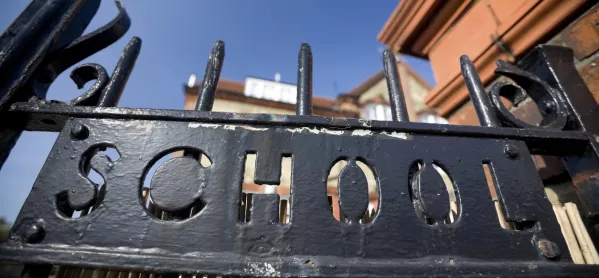Teachers and support staff should ask dozens of safety questions before schools decide whether to open their doors to more pupils next month, according to the latest guidance from education unions.
The joint guidelines, for primary teachers and support staff, say that two-metre social distancing must be maintained in schools as there is a lack of scientific evidence that children do not transmit Covid-19.
Revealed: The answers heads need at crunch DfE talks
Coronavirus: DfE to hold crunch back-to-school talks
DfE adviser: School return plan could risk virus spread
But the safety planning guide - from the NEU teaching union, Unite, Unison and GMB - says it seems “extremely unlikely” that the circumstances nationally will allow a wider reopening of schools according to the government’s proposed timetable.
“This is not a checklist to plan for wider opening on 1 June or any other predetermined date,” the guide says. “It seems extremely unlikely at present that circumstances nationally will permit that.”
Coronavirus: Safety fears about opening schools
The guidance comes as a row over when schools in England should reopen to more primary school pupils rages on.
Chief executives of academy chains have said schools must reopen soon to avoid “irreparable” damage to vulnerable children, while union bosses say more scientific evidence is needed to show it is safe.
The new guide, sent to primary school staff yesterday, asks members to go through a 20-page guide with their school.
If there are not satisfactory answers to questions on the checklist, then it “will not be feasible or safe to extend opening” until concerns are met, it says.
The checklist also asks teachers to check if clear instruction has been given that no marking should take place during this period as it says it will “not be safe” to mark children’s books during the pandemic.
Guidance issued by the Department for Education last week acknowledged that young children could not be expected to remain two metres apart from each other and staff.
Instead, the government advice said primary school class sizes should be limited to 15 pupils - and these small “consistent” groups should be kept from mixing with other pupils and staff during the day.
But the guidelines from the unions call on headteachers to maintain social distancing in classrooms, and in movement around the school, and operate in a similar way to other workplaces.
It says: “This means that leaders must determine the numbers of pupils they admit according to maintaining social distancing of 2 metres between pupils and between pupils and school staff.
“The number of children in each class must be calculated accordingly. In most classrooms, this will mean fewer than 15 children present at one time.”
The government expects children to be able to return to nurseries and childcare settings, and for Reception, Year 1 and Year 6 pupils to be back in school, from June 1 at the earliest.
Regarding the checklist, Kevin Courtney, joint general secretary of the NEU, said: “It sets out the standards which teachers, school staff and parents should expect to be met before the headteacher decides that the school is safe to open more widely.”
Meanwhile, Paul Whiteman, general secretary of school leaders’ union the NAHT, said primary school staff wanted more clarification on whether schools are centres of transmission.
He told BBC Radio 4‘s Today programme: “Specifically around the transmission from children to adults, we’ve been told over the weekend - it’s been asserted by the government publicly over the weekend - that there isn’t the level of risk that we fear. However, we haven’t yet seen the scientific underpin of that.”
Downing Street has hinted that a decision on whether schools in England will return next month is likely to be made this week.
The prime minister’s spokesman said: “As we have always said, safety comes first, but we must also be aware of the potential damage to a child’s education from not getting them back in the classroom.”




